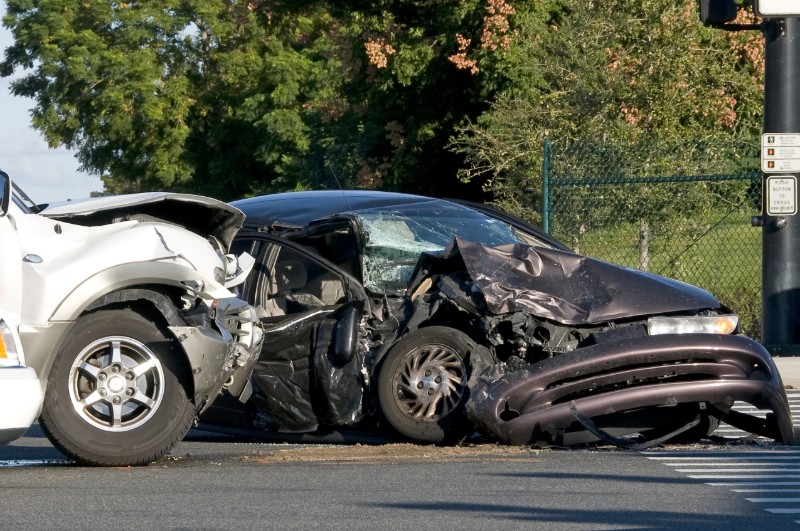Being injured in a car accident is overwhelming and stressful but dealing with insurance companies afterward can add a whole new layer of stress. One question car accident victims ask is: “How can I maximize compensation for my car accident settlement?”
The reality is that the insurance company’s goal is to pay you as little as possible. Your goal is to recover every dollar you’re legally entitled to. And the steps you take immediately after the crash—and in the weeks and months that follow—can make a huge difference in your final payout.
This article walks you through how to maximize your car accident compensation, based on real-world legal strategies and California personal injury law.
Step 1: Seek Immediate Medical Attention
Always get medical care right away after an accident—even if you feel “fine.”
Some injuries like concussions, whiplash, or internal bleeding may not show symptoms right away. Getting checked by a doctor creates a medical record that connects your injuries to the crash. If you delay seeking medical treatment, the insurance company may argue that you weren’t really hurt or that something else caused your injuries.
In California, medical documentation is a critical part of proving damages in a personal injury claim. Your medical records establish:
- The severity of your injuries
- The timeline of treatment
- The ongoing impact of your injuries on your life and livelihood
Step 2: Preserve Evidence
Strong evidence makes for strong compensation. As soon as you’re safe and able, begin gathering documentation to support your claim. This includes:
- Photos of the accident scene, vehicle damage, and visible injuries
- Police report
- Witness statements and contact info
- Medical bills, records, and treatment notes
- Pay stubs and work leave slips from your medical provider to verify lost wages
- Record daily journal entries describing your pain levels and emotional impact
An experienced attorney will work quickly to collect and preserve critical evidence, and sometimes they will hire accident reconstruction experts, investigators, or medical experts to strengthen your case.
Step 3: Don’t Talk to the Insurance Company Alone
Insurance adjusters may seem friendly, but they are trained to protect company profits, not your best interests. Insurance companies are for profit businesses who make money by reducing your pay out.
Avoid these common traps:
- Giving a recorded statement
- Accepting a quick lowball offer
- Downplaying your injuries (“I’m doing okay”)
- Signing medical release forms giving them access to your entire medical history
Every word you say to an insurance company representative can be used against you later. Let an experienced car accident attorney handle all communication on your behalf. They will negotiate aggressively to secure the maximum settlement—while you focus on healing from your injuries.
Step 4: Know What Your Claim Is Really Worth
Many accident victims underestimate the true value of their claim. Compensation in California car accident cases may include:
Economic Damages:
- Medical expenses (already incurred and future)
- Lost wages (already incurred and future)
- Reduced earning capacity
- Property damage (vehicle repair, diminished value, or total loss payout)
- Out-of-pocket expenses (medical deductibles, co-pays, prescriptions, etc.)
Non-Economic Damages:
- Physical pain and suffering
- Mental anguish and trauma
- Loss of enjoyment of life
- Inconvenience
- Effects of disfigurement or of scarring
- Effects of temporary or permanent impairment or disability
- Loss of consortium (impact on relationship with spouse)
If the other driver acted with gross negligence (e.g., drunk driving), punitive damages may also be available. Acts done with reckless disregard for safety may give rise to punitive damages.
A skilled attorney can help calculate all potential damages, including those that are hard to quantify. Attorneys often work with medical experts, economists, and vocational specialists to accurately project the long-term costs of your injuries.
Step 5: Avoid Social Media
What you post online can hurt your case. Even a simple photo of you with your friends smiling at a baseball game or on a hike could be used to argue that your injuries aren’t as serious as claimed.
Tips:
- Avoid discussing the accident or your injuries on social media
- Don’t post photos or videos of physical activities
- Adjust privacy settings, but don’t rely on them for protection
Better yet, avoid posting on social media entirely until your claim is resolved.
Step 6: Be Patient—Don’t Settle Too Soon
Insurance companies often pressure victims into settling quickly—before they know the full extent of their injuries.
Why is this risky:
- You may not realize that you could have additional expenses and costs
- This can shift costs onto to you that the insurer was otherwise obligated to pay
- You may need more treatment, rehabilitation, or even surgery
- Some symptoms can take weeks or even months to fully develop
- In many injury claims, you have up to 2 years to settle your claim
- Once you sign a release, you give up your right to any further compensation
Wait until you reach maximum medical improvement (MMI) before finalizing your claim. That’s when your doctor determines that your condition has stabilized and no further recovery is expected.
Step 7: Work with an Experienced Personal Injury Lawyer
This is the single most important step to maximizing your settlement.
Studies consistently show that injury victims who hire an experienced personal injury lawyer receive significantly higher compensation than those who don’t—often 3 to 4 times more. And there are times when it can even be a lot more than that. Skilled personal injury attorneys will:
- Investigate liability, gather evidence and determine any and all responsible parties
- Handle all dealings and negotiations with the insurance company
- Work with experts to prove damages
- File a lawsuit if the insurance company isn’t playing fair
- Fight for your rights every step of the way
What If You’re Partially at Fault?
Even if you were partially responsible for the crash, you can still recover compensation in California under the comparative fault rule. Your compensation would simply be reduced by your percentage of fault.
Example:
If you’re awarded $100,000 but found 20% at fault, you’ll receive $80,000.
Your attorney can fight to reduce your share of fault using scene inspections, police reports, witness statements, expert analysis, and legal arguments.
Use Your Own Insurance Wisely
California drivers often carry medical payments (MedPay) coverage or uninsured/underinsured motorist (UM/UIM) protection. These coverages can help cover costs when the at-fault driver is uninsured or underinsured.
A knowledgeable attorney knows how these coverages apply and how to obtain these benefits and is there to help ensure you don’t get shortchanged by your own insurer.
Frequently Asked Questions
How long do I have to file a claim in California?
In most cases, you have two years from the date of the accident to file a personal injury lawsuit. Don’t wait—evidence fades and deadlines matter. If your claim involves a government entity or government employee, you have only six months from the date of the accident to file a formal notice of claim with that entity.
What if the other driver’s insurance isn’t enough?
You may be able to tap into your underinsured motorist coverage or pursue a personal judgment against the at-fault party, depending on their assets.
Do I have to pay legal fees up front?
No. Most California car accident attorneys work on a contingency fee basis. You pay nothing unless they recover compensation for you.
Conclusion: Take the Right Steps and Maximize Your Recovery
Getting the most compensation after a car accident is about knowledge, timing, and experienced representation. Every decision you make—from medical care to who you hire as your lawyer—can impact your settlement.
If you need assistance with a car accident claim, please contact us.
The general information provided on this website should not be considered legal advice and does not constitute legal advice. For legal advice, you should consult directly with an attorney. If you contact us by telephone, email, letter, or by contact form submission through this website, please note that such communication does not create or constitute an attorney-client relationship. We cannot act as your attorney until we are hired as your attorney by a formal written agreement.


 How Is Car Accident Injury Compensation Calculated?
How Is Car Accident Injury Compensation Calculated?